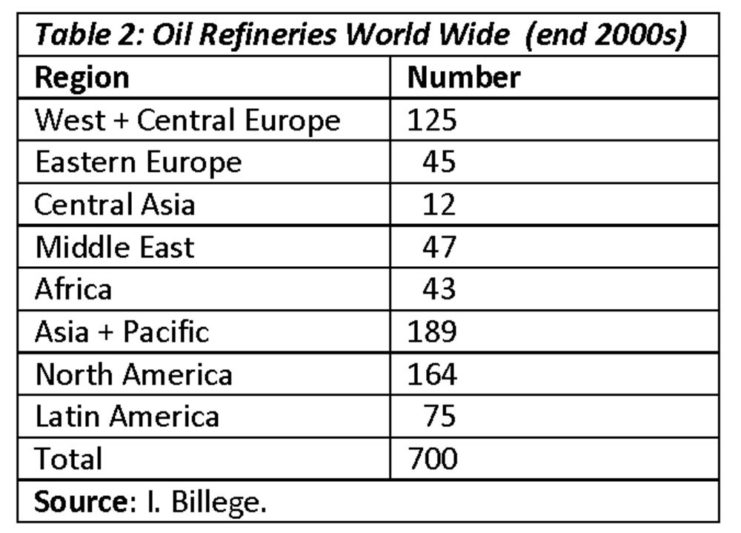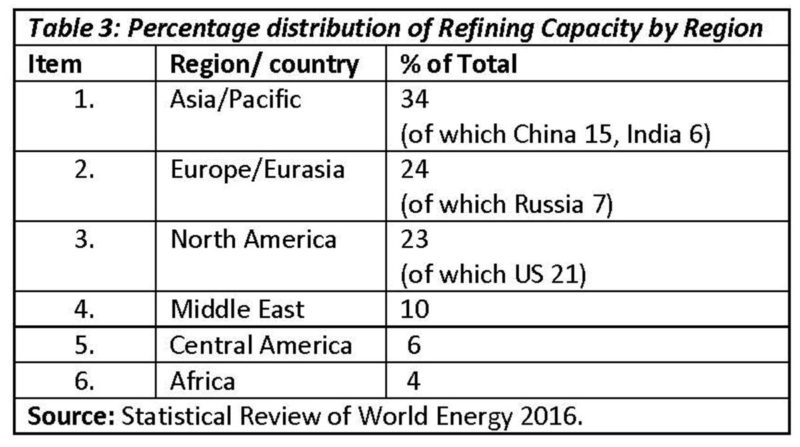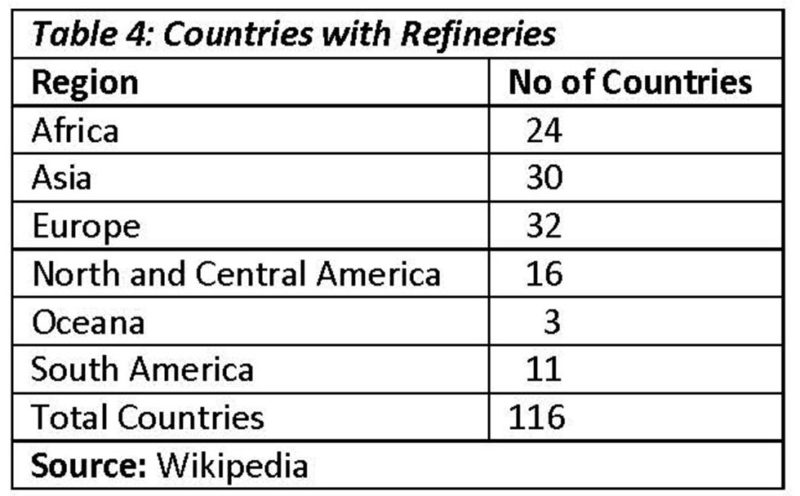If one began with the standard industry description of an oil refinery that was earlier introduced, which is: “an industrial plant or complex that manages hydrocarbon molecules extracted from crude oil, natural gas liquids and national gas” (in the case of Guyana, at the Stabroek bloc Liza wells), that complex could produce an assemblage of different petroleum based products that can potentially reach several thousand.
Conveniently, industry manuals help by grouping these products into 16 classes, namely, gasoline (46%); heating oil/diesel fuel (20%); jet fuel (kerosene) (8%); propane/ propylene (7%); NGL/LRG (6%); still gas (4%); petrochemical feedstocks (2%); petroleum coke (2%); residual/heavy fuel oil (2%); asphalt/road oil (2%); lubricants (1%); miscellaneous products/special naphthas 0.4%); other liquids (1%); aviation gasoline (0.1%); waxes (0.04%); and kerosene (0.02%). The US percentage distribution of shares in these classes is shown in brackets.
In practice, however, not every refinery produces anywhere near the full range of possible products. And, perhaps even more importantly, they are invariably not constructed with the capability of doing this. As we proceed to discuss closely the issues surrounding a local refinery, readers will need to be particularly aware of the concept of oil refinery capability; in much the same way they should be aware of sugar factory capability in Guyana.
They would know that, for example, sugar factories differ from estate to estate, in terms of their size and operational capability. Indeed, at the global level, these differences are quite enormous. Modern oil refineries though, are far more complex than sugar factories, so that oil refinery size and operational capability differ greatly. Before addressing the issues arising from this observation, it is vital for readers to be informed about the basic structure and features of oil refining at the global level.
Global refining
Worldwide, oil refining capacity had been increasing during the 2000s. As of September 2016 that capacity stood at around 102 million barrels per day. Official data for the decade 2005 to 2015 are shown in Table 1. There we observe the increase was from 86.6 million barrels per day in 2005 to 97.2 million barrels per day in 2015, or about 12 percent. Of the 2015 total, 44.1 million barrels per day (45 percent) were located in the Organization of Economic Cooperation and Development (OECD) and the remainder (55 percent) located in non-OECD countries.
Presently, there are around 650 oil refineries operating worldwide. This number had peaked at the end of the 1990s, when the total reached 725 oil refineries. And, as can be seen in Table 2, the total fell to 700 by the end of the 2000s. The data (not shown in Table 2) reveal that much of the decline has been located in West and Central Europe and North America, where older, less efficient and unprofitable refineries were closed down. The Asia Pacific region has shown the greatest gain, and today hosts the largest number of refineries.
Underscoring these data, Table 3 reveals the percentage distribution of global refining capacity by region. Here we see clearly the dominance of the Asia/Pacific region; and as well, the leading roles of China and India, in that region, as might be expected given their sizes. The dominance of the United States in the North American region is similarly revealed in the Table; and again this is not surprising. Africa’s lagging status is revealed in the Table as well.
This reflects the region’s relative underdevelopment.
Finally, Table 4 shows as many as 116 countries have oil refineries. Europe (32 countries), Asia (30 countries) and Africa (24 countries), each have more than one-fifth of the total number and North and Central America (16 countries), South America (11 countries) and Oceania (3 countries) have smaller proportions.
To avoid cluttering this week’s column with too many Tables, I shall offer next week data that pertain to the regional (Caribbean) situation.
These data would seek to make clear that 1) while a local oil refinery would be a new prospect for Guyana, it is already very common worldwide. This is revealed in the large number of countries that already have oil refineries; 2) their wide geographic spread and 3) as we shall observe next week, they are also fairly common in the Caribbean region. In discussion with readers, I have been somewhat surprised that this is not more widely appreciated.
This observation is important, as ignoring the crucial issue of a local oil refinery in abstraction from its vital operational details, is pointless. At present the sizes envisaged by commentators and analysts represent less than 0.1 per cent of total global refining capability. The tiny incremental impact at the global level of any proposed oil refinery in Guyana needs to be kept at the forefront of our deliberations, as we go forward.










